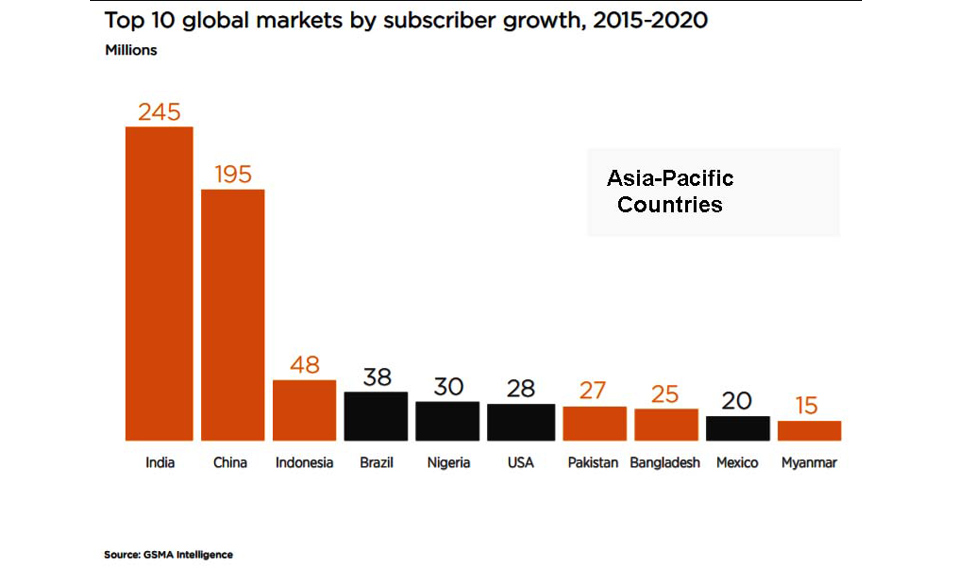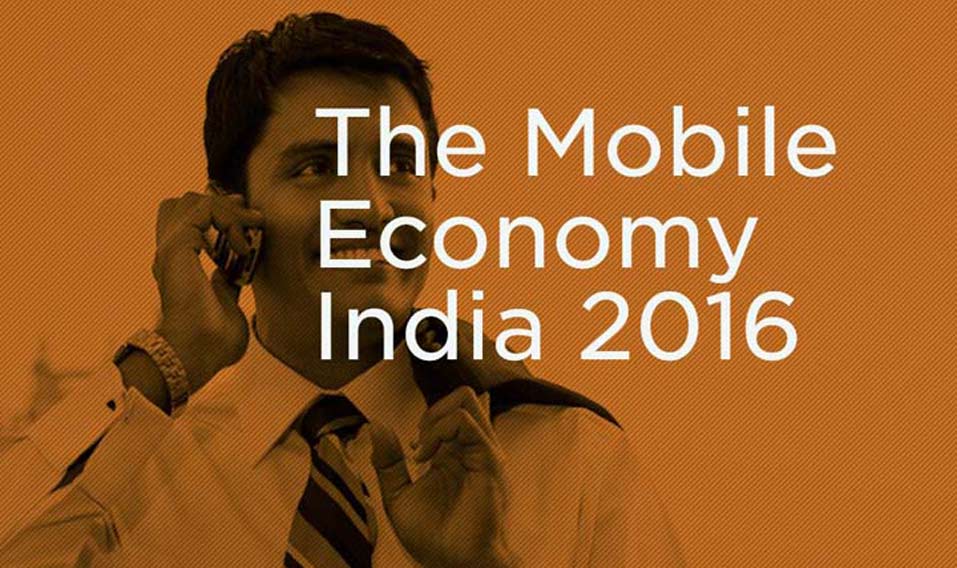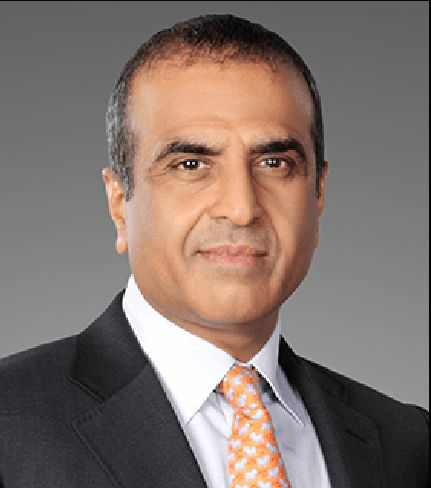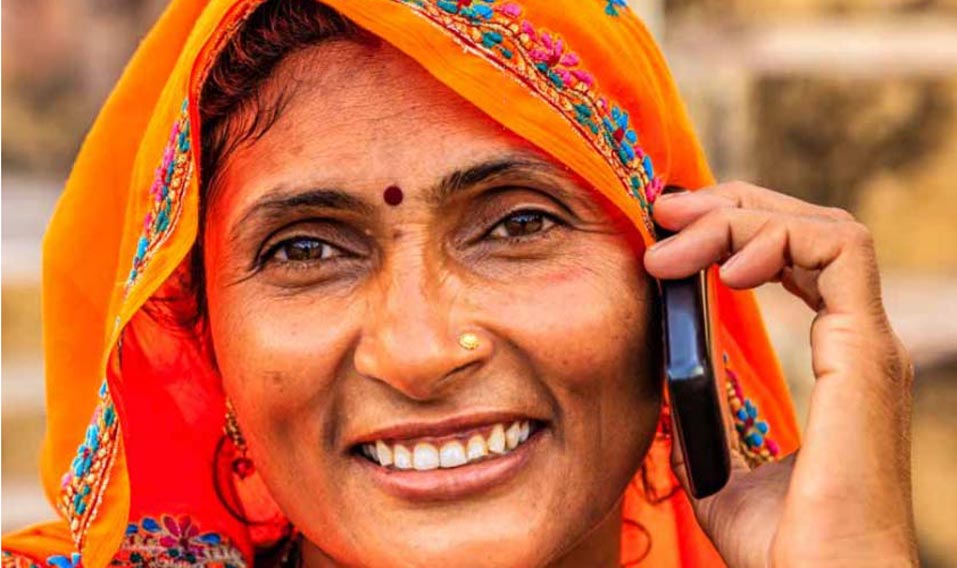A new study by the GSM Association, the global body representing most of the world's mobile operators, finds that India leads the world in the growth of the world's cellular markets, with almost a billion mobile subscribes by 2020 {India has already surpassed this number for actual handsets in use, but this obviously includes multiple sets per person).
The report entitled ‘The Mobile Economy: India 2016’, suggests that at the end of June 2016, 616 million unique users had subscribed to mobile services in India, making it the second-largest mobile market globally.
India also overtook the United States in 2016 to become the world’s second-largest smartphone market with an installed base of 275 million devices.
Improving affordability, falling device prices and operator investments in network coverage and quality will lift the country’s penetration rate to 68 per cent of the population (up from 47 per cent in 2015).
There is also a perceptible technology shift to mobile broadband services; the number of 3G/4G mobile broadband connections is forecast to reach more than 670 million by 2020, almost half of all connections. The mobile industry is set to invest heavily, with operator capital expenditure (CAPEX) growing to $34 billion (Rs 2.3 lakh crore) for the period 2016 to 2020.

In 2015, India’s mobile industry generated economic value equivalent to 6.5 per cent of the country’s Gross Domestic Product (GDP), a contribution that amounts to more than $140 billion (Rs 9 lakh crore). The figure accounts for both the direct economic activity generated by mobile operators and the ecosystem of mobile industries in India. This contribution is expected to grow to $210 billion (Rs 14 lakh core) by 2020.
Mobile operators and the ecosystem provided direct employment to approximately 2.2 million people in India, as well as indirectly supporting 1.8 million additional jobs in other industries and sectors that benefit from the activity of the mobile industry. This brings the total impact of the mobile industry to nearly 4 million jobs in 2015.
As of mid-2016, around 430 million people had access to mobile internet services, a figure that will increase to almost 670 million by 2020, or about half the population. This still lags the regional average of 63 per cent penetration, and the survey found that lack of awareness and locally relevant content are the biggest barriers to internet usage.
The full report, ‘The Mobile Economy: India 2016’ in PDF format can be found here
India, in Asia
GSMA has also brought out a separate report The Mobile Economy Asia Pacific 2016 which highlights some significant and innovative outreaches in the Indianmobile ecosystem. We bring you three examples:
MOBILE CONNECT, a secure access to websites, coming
Mobile Connect is the global, mobile industry-led, single log-in solution that delivers secure consumer access to websites and apps. It uses the consumer’s unique mobile number to verify and grant online access anywhere they see the Mobile Connect logo.
Mobile Connect is evolving to deliver secure authorisation of digital transactions and to add context and attributes about the user and the transaction to increase convenience, trust and security for users and online service providers, while respecting users’ privacy.
Mobile Connect India is a collaborative effort by the six leading operators in India (Bharti Airtel, Aircel, Idea, Tata Teleservices, Telenor and Vodafone India). The operators account for around 85% of the Indian market, with more than 800 million connections as of March 2016 (all of which are Mobile Connect enabled). These operators are in the process of launching Mobile Connect across all of their circles. Use cases are being developed by operators and service providers to address some of the pertinent issues faced by the industry. These include helping banks complete two-factor authentication (mandatory in India for transactions) without the need for complicated security questions or SMS; helping customers to authenticate in-person without actually giving away personal data, including the mobile number, for example with e-commerce home deliveries; and detecting advertising fraud.
Kisan Mitra, from Vodafone India offers agri-information

Launched in May 2015, Vodafone India’s Agri VAS Kisan Mitra (Farmer’s Club) now has a base of 500,000 users. The service offers agricultural information and news, market prices and localised weather forecasts via SMS. Available in nine languages, the service allows farmers to receive three to six SMS alerts per day. A Vodafone study, Connected Farming in India, released in May 2015 claims that simple mobile service interventions can increase a farmer’s income by $128 per year for more than 60% of Indian farmers by 2020.
Project Sampark from Telenor India addresses gendergap

Telenor India (formerly Uninor) launched Project Sampark in August 2014 to help bridge the gender gap in rural India. A product called Bandhan SIM Plan was piloted comprising a pack of two paired SIMs, one to be used by a woman and the other by a male member of the household. With this product, Telenor has attempted to overcome the cultural barriers that keep women from owning a mobile connection and encourage men to recognise the value of it for women in their household.
 Sunil Bharti Mittal, Founder and Chairman, Bharti Enterprises
Sunil Bharti Mittal, Founder and Chairman, Bharti Enterprises
Having determined that women retailers serve women customers more effectively, Telenor has also recruited a network of local women retailers to market and sell the Bandhan SIM Plan. The project was piloted in the Aligarh district of Uttar Pradesh West. Within five months of launch, Telenor saw a 30% rise in new subscribers in the pilot area. This product is now being scaled to three more towns.
Airtel's Mittal to head global GSM Association
At the GSMA Mobile 360 event in Delhi last week, the association that Sunil Bharti Mittal, Founder and Chairman, Bharti Enterprises is to be the new Chairman from January 2017 to December 2018.
Mittal will oversee the strategic direction of the organisation, which represents nearly 800 of the world’s mobile operators, as well as more than 300 companies in the broader mobile ecosystem.
He says: “In a relatively brief period of time, mobile has had a transformational impact on individuals, businesses, industries and societies, contributing significantly to local economies and improving the lives of billions around the world....I am excited about what the next chapter holds for us, as we work to connect everyone and everything to a better future. In my new global role, I am also excited to support the ongoing mobile broadband revolution in India to boost the Government’s Digital India Program and its vision of broadband access for all.”
He is the first Indian to be elected as Chair of the GSMA.





